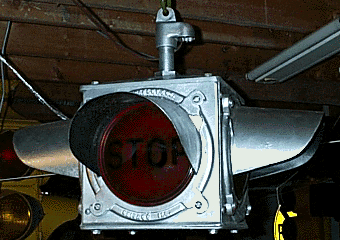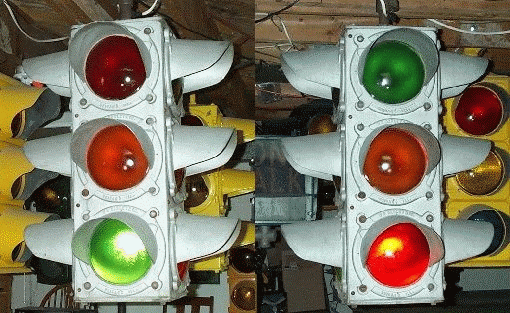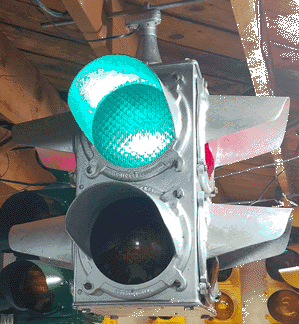W.S. Darley Signals

|
This is a Caution beacon. Usually found out away from the city at intersections that are not busy enough for a traffic signal. This is the oldest signal in
this collection. There are no accurate archives to date Darley signals by, but it is known that they were produced starting sometime in the 1920's and ceased sometime in the 1930's. Older Darley 4 way signals only had one bulb per section serving all 4 lenses in that section. This resulted in three section Darley signals having red lenses on the top on two of the four sides and green lenses on the top on the other two sides with yellow in the middle all the way around. Newer Darleys did have reflectors with one
bulb per lens like most other traffic signals so that red lenses could be on the top, and all the green lenses on the bottom, on all four sides. |
|

|
Here is Darley 4 way. Darley
made many variations of 4 way signals. Single bulb beacons (as shown
above), 4 bulb
beacons, 2 bulb 4 ways (red, green lenses only, as shown below) 8 bulb 4 ways (red,
green lenses only) 3 bulb RYG 4 ways and 12 bulb RYG 4 ways. This is a 3
bulb RYG signal. It has one bulb per level or section, so on the main
street sides of the signal, the lenses are arranged normally with red on
top and green on the bottom, but on the side street sides, green and red
are in reversed positions. To the left is an animation of the signal
sequencing with both the main street and side street views. Thank you
Bear for doing the animation for me!!! You can also view a
video of the signal sequencing here.
This signal is the only signal in this collection that has an original
controller mounted in the bottom of the signal. To see pictures of the
controller, click
here. You will notice that green Darley lenses are more green than
other green lenses in other signals. |
|

|
Here
is a very unique signal. Like the Darley 3 bulb above,
it only has 1 bulb per section, so the lenses are reversed on two of the sides. A clearnace is achieved
by having both bulbs on at once. A homemade cam driven controller runs this signal and is
mounted inside of the signal. |
|


